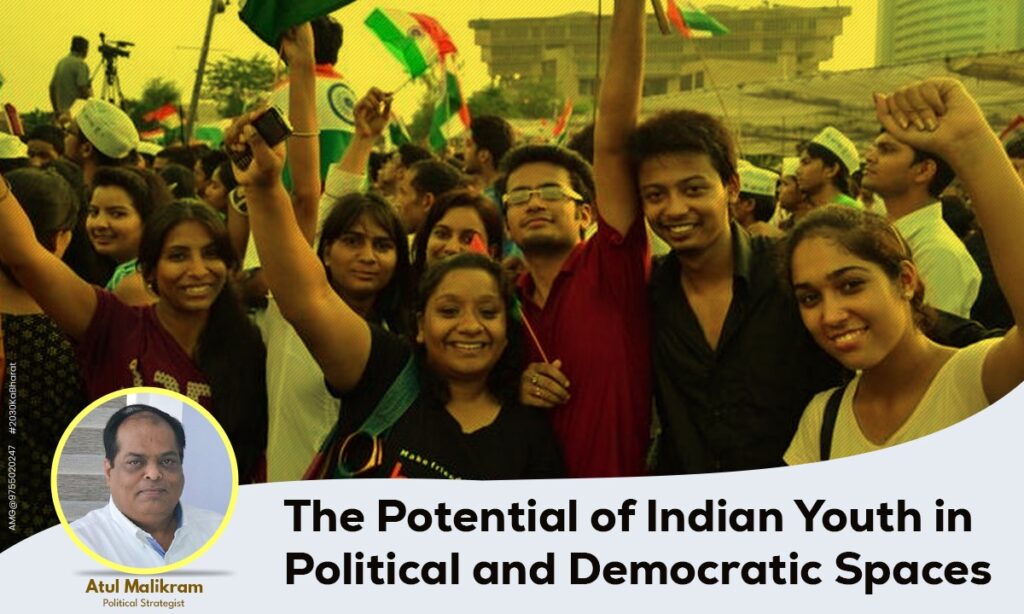In the dynamic landscape of Indian democracy, a pivotal force often overlooked is the Indian youth – a segment critical for shaping the nation’s political trajectory. India boasted a substantial youth population, with around 65% of its people below the age of 35. Unleashing the potential embedded in this demographic is paramount for the robustness and adaptability of our political and democratic institutions.
Dynamic Force:
India’s youth constitutes a significant voting bloc, and their collective influence can sway electoral outcomes, leaving an indelible mark on the political canvas.
Future Architects:
The youth stands as the architects of the nation’s future. Policies enacted by the government today will reverberate in their lives and determine the trajectory of the country. Hence, active participation in the democratic process becomes imperative for these young visionaries.
Catalysts for Change:
Youthful voters inject fresh perspectives, innovative ideas, and a fervent appetite for change. They serve as catalysts, pushing for new ideologies, policies, and leaders who resonate with their concerns and dreams.
Tech Pioneers:
India’s youth is adept at navigating the digital realm, with a strong presence on social media and digital platforms. This technological prowess allows them to engage with political issues, articulate their opinions, and mobilize support efficiently.
Tailoring Policies to Youth Needs:
Championing causes such as education, employment, skill development, healthcare, and affordable housing, youth voters wield the power to compel political parties to prioritize these issues on their agendas.
Read Also:
Overcoming Voter Apathy:
Historically plagued by low voter turnout, the youth now have the potential to combat voter apathy, fostering a more engaged and representative democracy.
Striking a Generational Balance:
In a nation with a diverse population spanning different age groups, the youth vote acts as a counterbalance, ensuring equitable resource distribution and policy considerations for all generations.
Shaping Party Agendas:
Political parties, recognizing the sway of the youth, increasingly center their focus on issues pertinent to this demographic. A robust youth turnout signals to parties the importance of addressing the youth’s concerns.
Nurturing Progressive Policies:
Active participation of the youth in politics often translates into policies that are inclusive, progressive, and reflective of the aspirations of the younger generation.
Fortifying Democratic Threads:
A robust youth voter turnout strengthens the very fabric of democracy, ensuring governmental alignment with the will of the people and accountability to their evolving needs.
To harness the full potential of the youth vote, it is crucial to encourage political awareness and engagement among young people, improve voter registration processes, and create an environment where the youth feel empowered to participate actively in the democratic process.
Additionally, political parties and policymakers should take the concerns of the youth seriously and work towards addressing their specific issues and aspirations. By promoting the role of youth in political and democratic spaces, India can build a more inclusive and responsive governance system for the generations to come.


Pingback: The Potential of Indian Youth in Political &...
Pingback: Youth and Madhya Pradesh Politics – Atul Malikram
Pingback: Empowering Youth in Indian Politics: A Call for Change – Atul Malikram
Pingback: Understanding the Dynamics: Factors Influencing Youth Voting Behavior in India – Atul Malikram